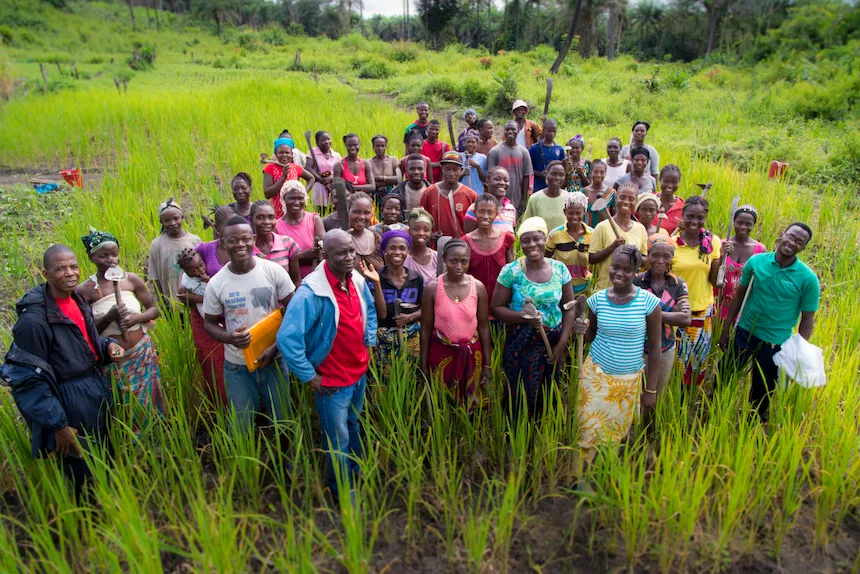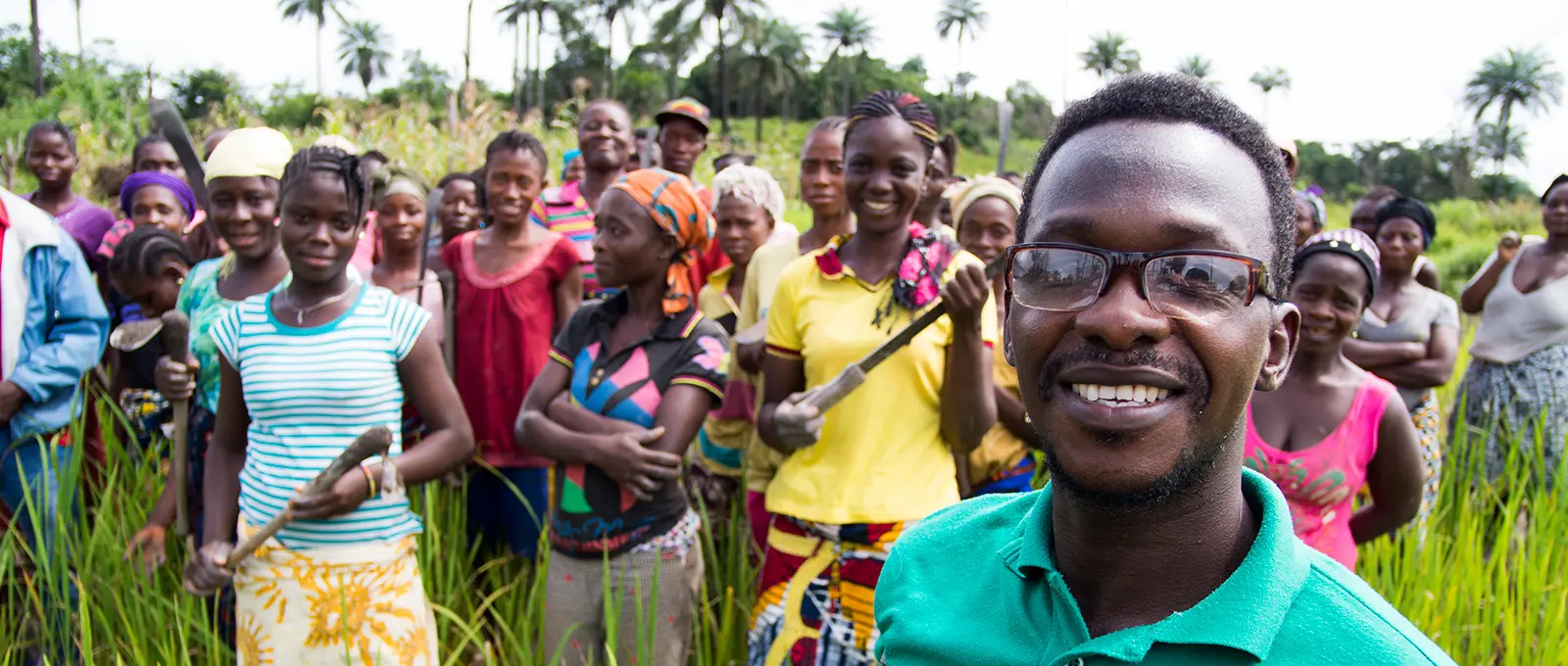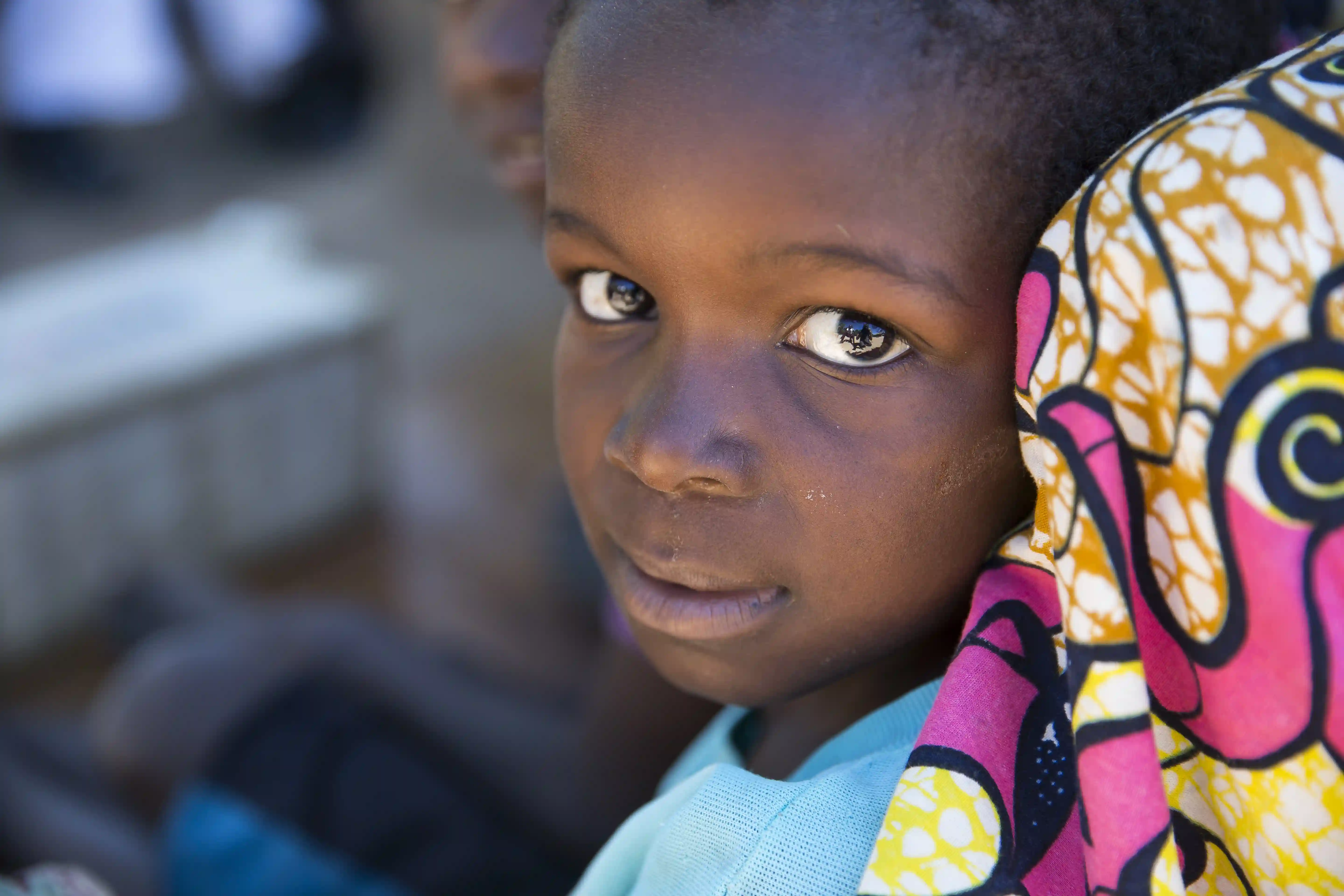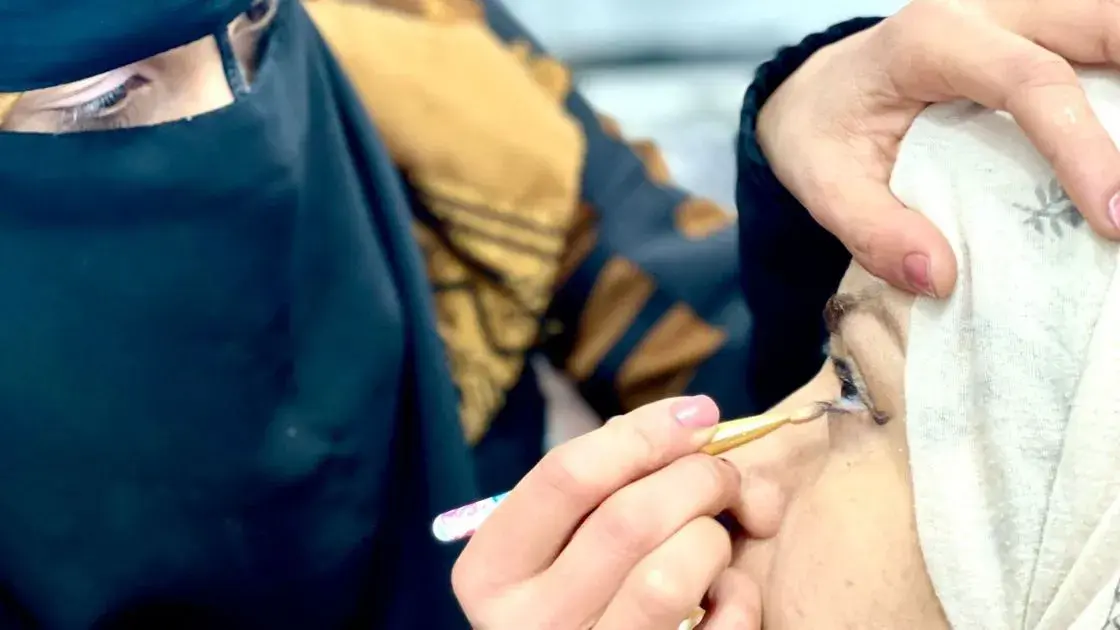We're taking the classroom to the field with our Farmer Field Schools project in Liberia — and students are reaping the rewards of better nutrition and increased income.
Just off a narrow, muddy, rutted road in rural Lofa County, Liberia about 50 people are gathered in a large clearing, listening intently to the words of a broad-shouldered man. This is not a religious or political gathering — it is in fact a classroom. Welcome to the local farmer field school.
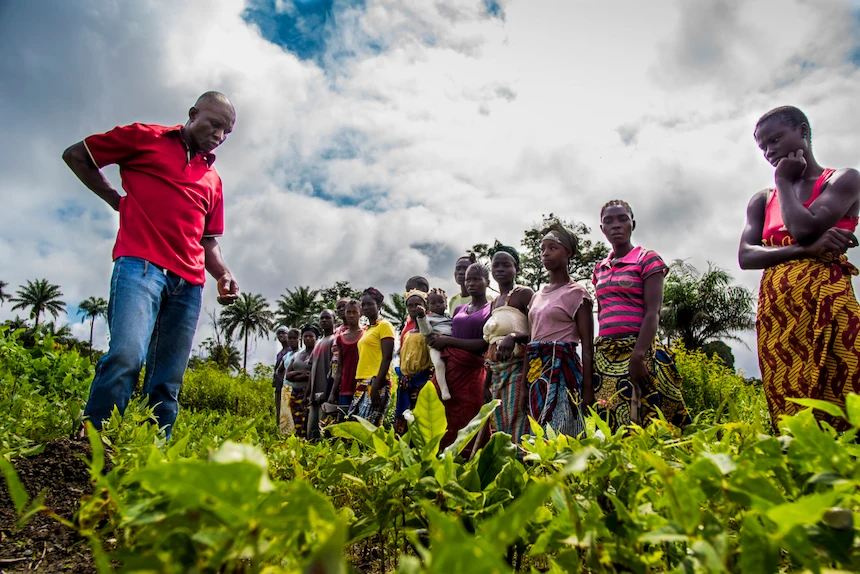
Kebah Bemah is thirty-five years old and the single mother of five children. “My husband left me and I had to start farming for myself,” she says. “I heard about the farmer field school from my neighbors and joined it to learn.” Kebah has an acre and a half and has already noticed that her harvest has improved.
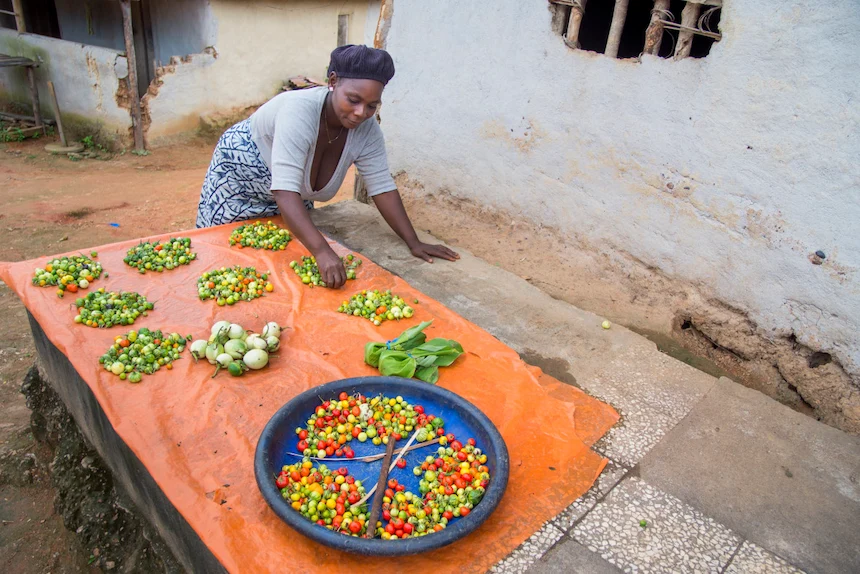
“We’re aiming to introduce best practices in farming, which will increase yields while also helping to alleviate malnutrition in the community,” the class leader says as the group disperses across the clearing and sets to work. He is Forkpa Blamah, district program supervisor for Concern in Lofa. “It’s about sharing knowledge and ultimately improving lives.”

“This is the improved method for growing rice,” Forkpa explains by way of example, leading us to a large plot planted in neat rows. It doesn’t look especially impressive or radical, but then again the most effective innovations often don’t. “Traditionally, people would use the broadcast method,” he says, “which basically involves flinging fistfuls of seeds across a cultivated area.” This way uses less seed in a more targeted way and produces significantly more rice. It’s definitely more labor intensive, but very much worth the effort.”
Kebah agrees. “With the old method I would get maybe two and a half bags of rice. With this last harvest I got nearly four bags.”
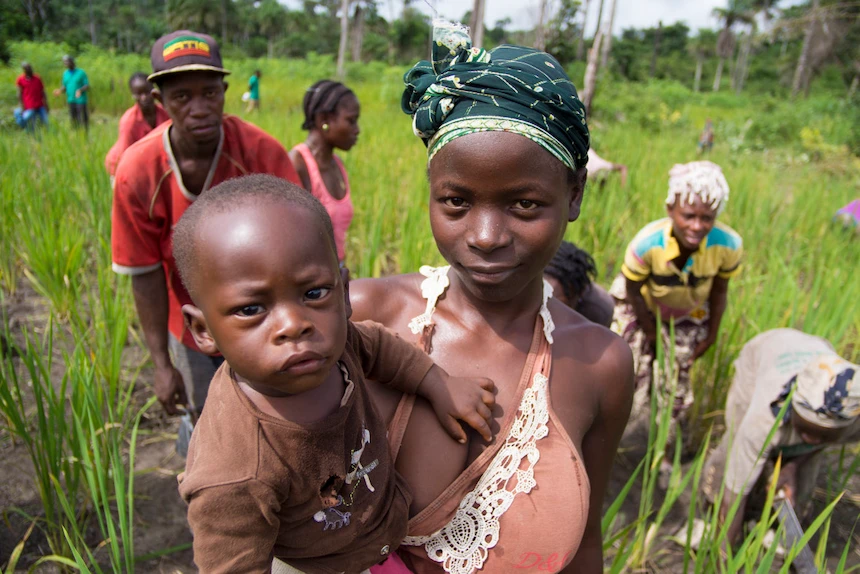
The concept of a Farmer Field School has been successful across many of the countries where Concern works, from Afghanistan to Malawi. Here in Liberia, farmers are formed into groups of about thirty and receive training, advice, seeds, and tools. Each group has two facilitators, one male and one female, and they are given intensive training to help them lead the activities.
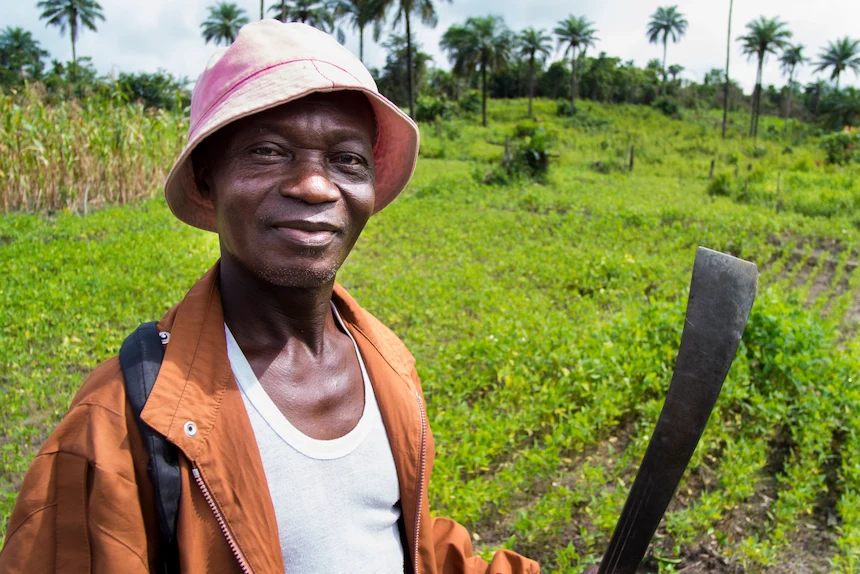
A collective plot is cultivated and sown with a variety of diverse crops using different methodologies. For example, students create a powerful fertilizer by mixing readily available materials such as ashes, potato greens, groundnut and cowpea leaves, and chicken manure. And locally grown plants have proven effective at pest control.
Support Concern's work in Agriculture

There are three groups in this school and so far they have planted rice, beans, cowpeas, groundnuts, sweetcorn, cassava, and sweet potato. The members get to share the harvest, with any surplus going to a community group. But the main purpose is to convince the members to grow these crops and use these methods to increase production on their own farms.

Back at her home, which is nearly an hour walk from the farm, Kebah has a surprise to show us. Behind a stout grass fence lies her new kitchen garden, complete with peppers, eggplants, watergreens, and local favorites like cocoyam (taro root) and beetaball (a local vegetable). All provide a variety of nutrients, complementing the family diet and helping to ward off the scourge of child malnutrition, which is so common here. “Any extra we have left over we sell,” Kebah says.
Extra food, better health, and a little cash to spend — what’s not to like about a field school!
